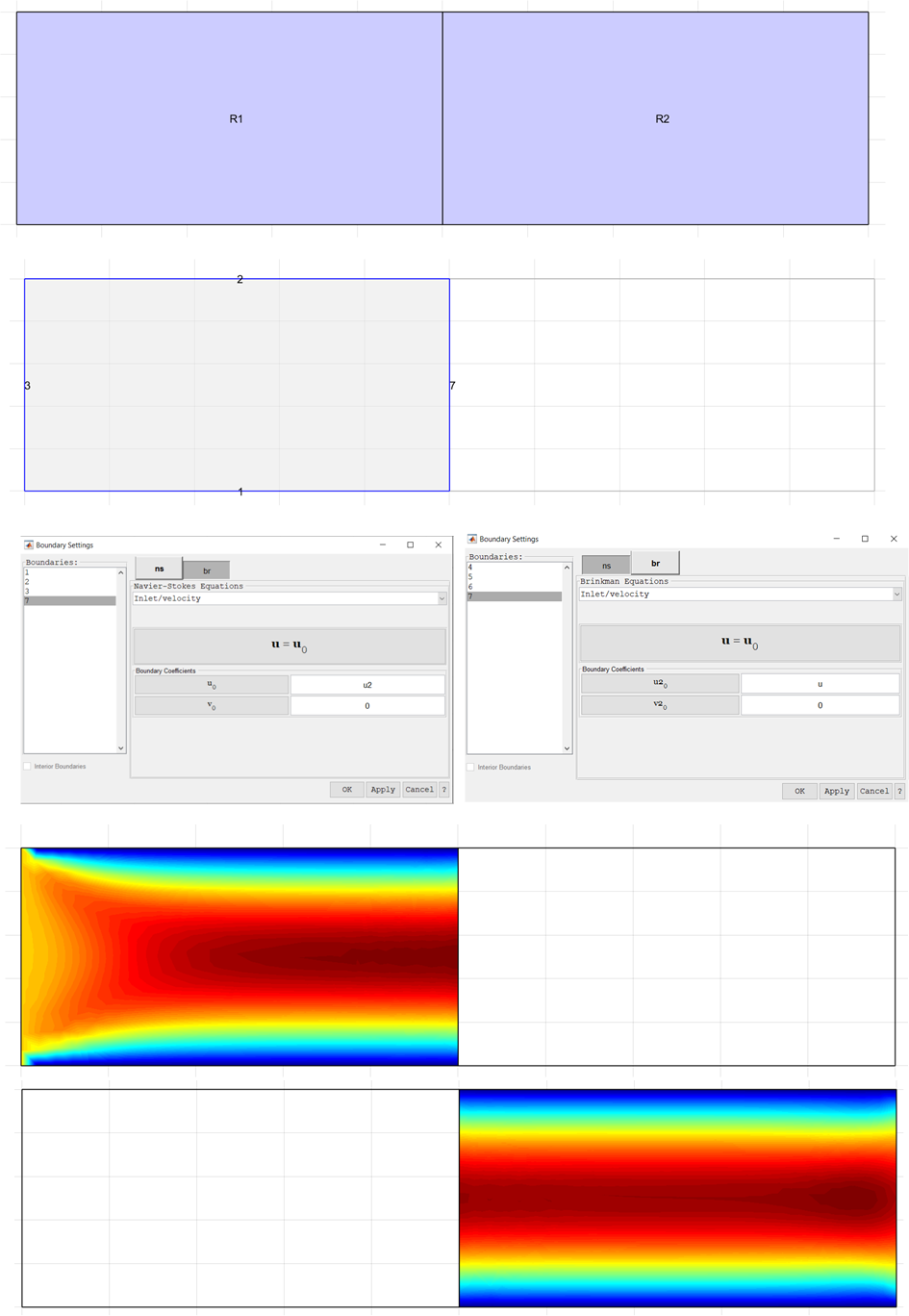Hi,
I am trying to use Navier-Stokes and Brinkman Equations for the flow in porous media (see the test domain below, where R2 is the porous media, and flow is from R1 to R2). I followed your example (
https://www.featool.com/doc/multiphysics_02_porous_flow1#tut_mph02) to build the model, but I have several questions:
(1) I set the boundary between R1 and R2 according to your example, i.e. for R1 - inlet velocity u2 and for R2 inlet velocity u. For more complicated test domain, I am wondering if there will be flow from R2 to R1 if the boundary is set up as inlet velocity for both domain? Actually I did find the backward flow arrows in other more complicated test domains. Here I just used a simple example.
(2) In the Brinkman equations, why there is no parameter for porosity? Perhaps it is lumped into other parameters? It will be great if porosity can be set up by users.
(3) Would it be possible to show the surface plots for both R1 and R2 simultaneously? Now it can only be shown separately for R1 and R2 for the flow if I choose x-velocity.
Thank you for your help,
